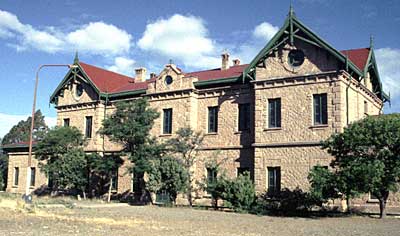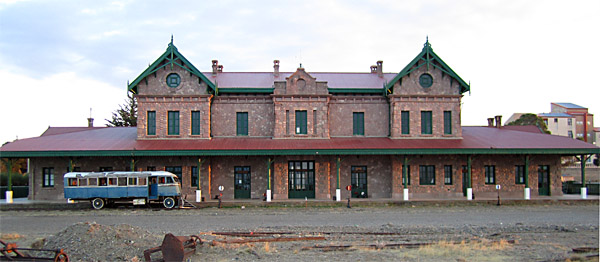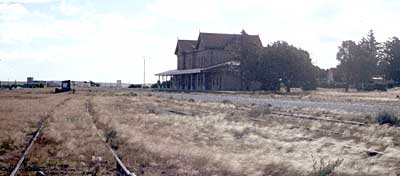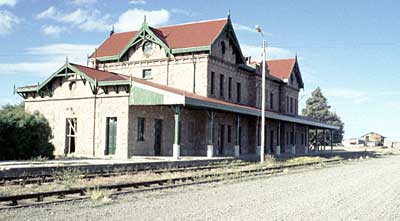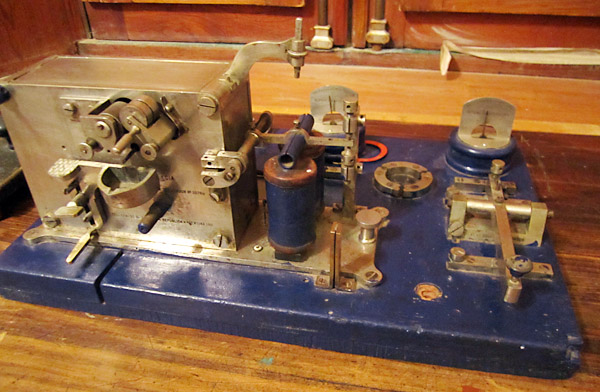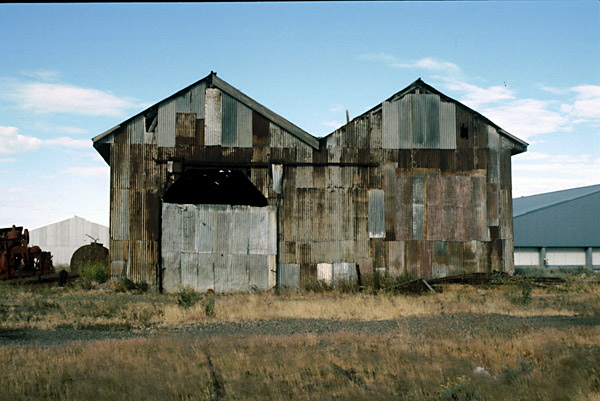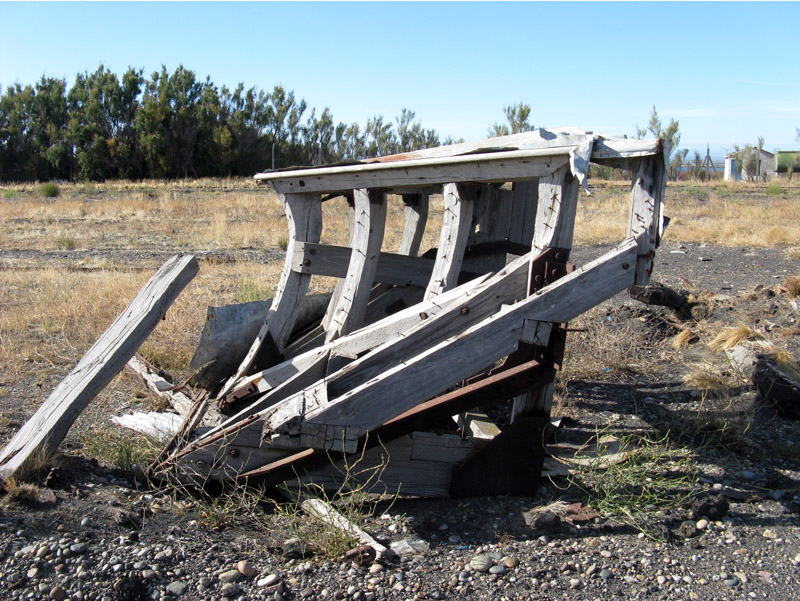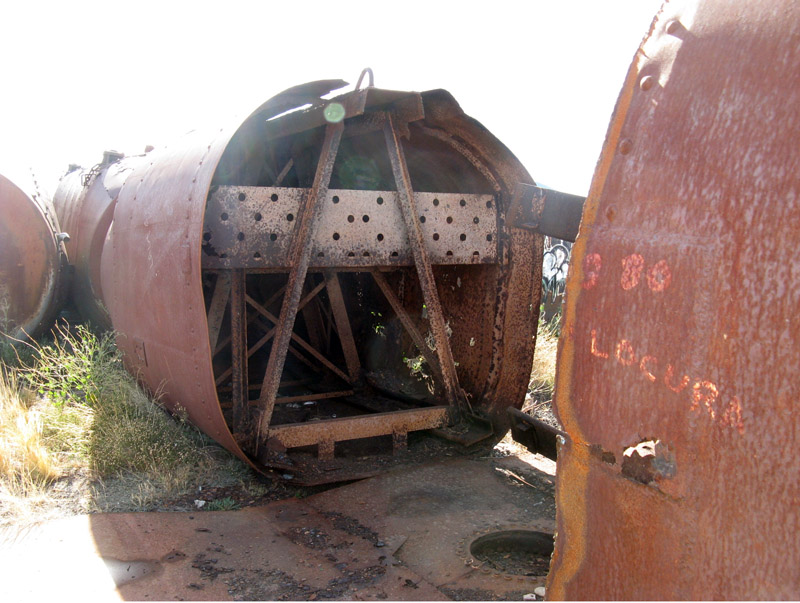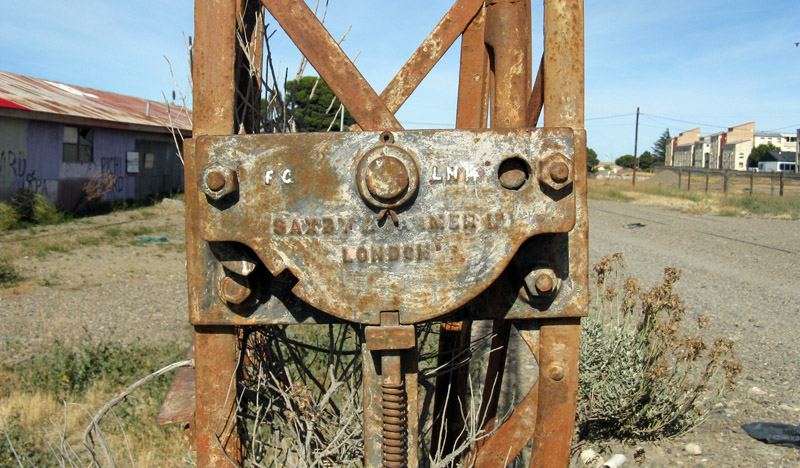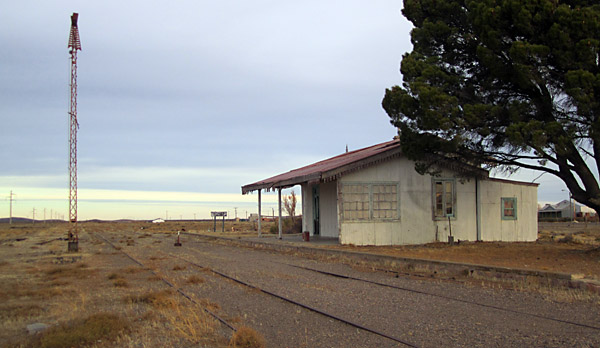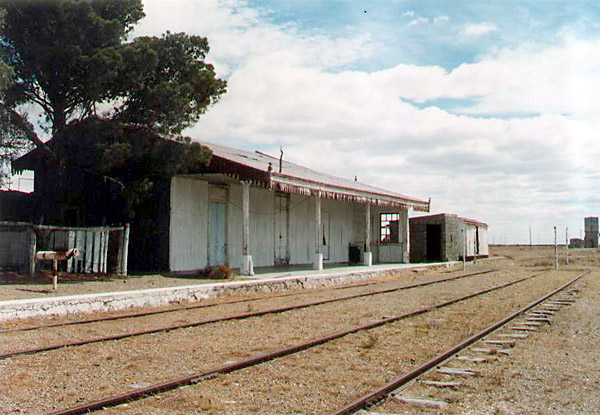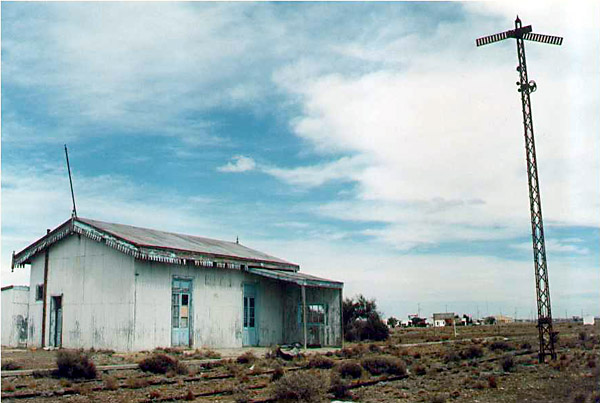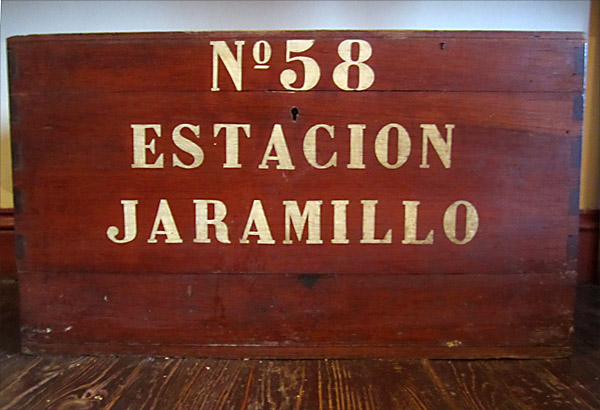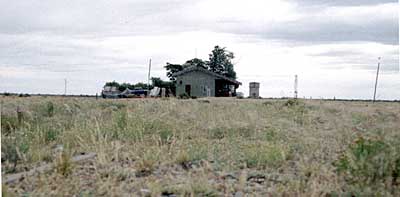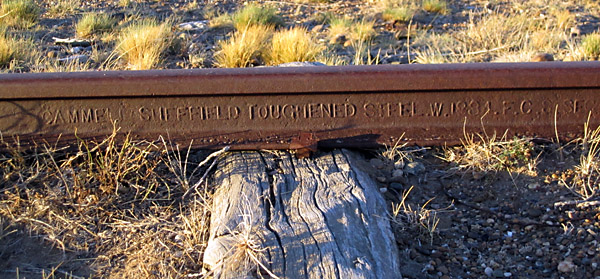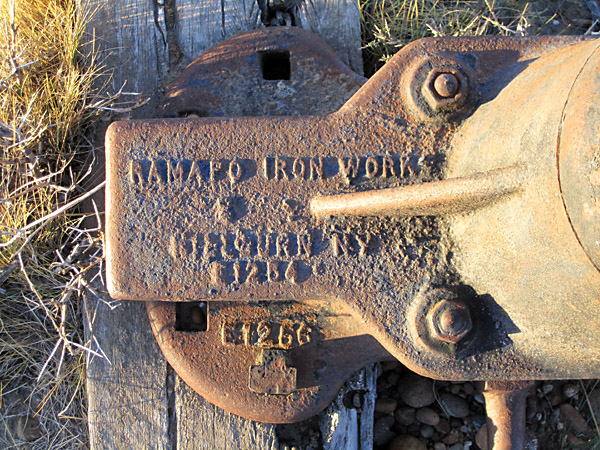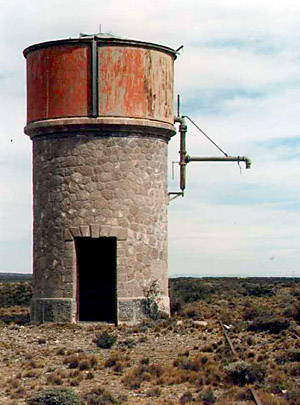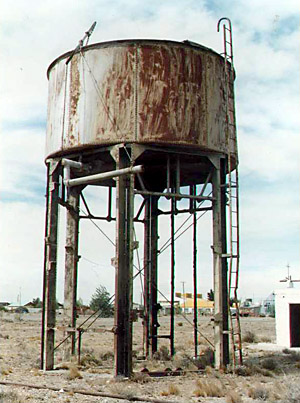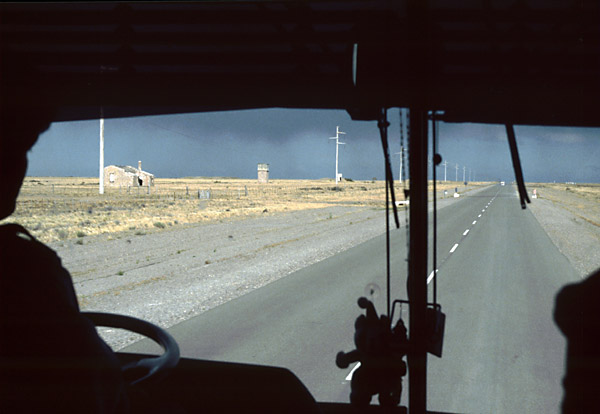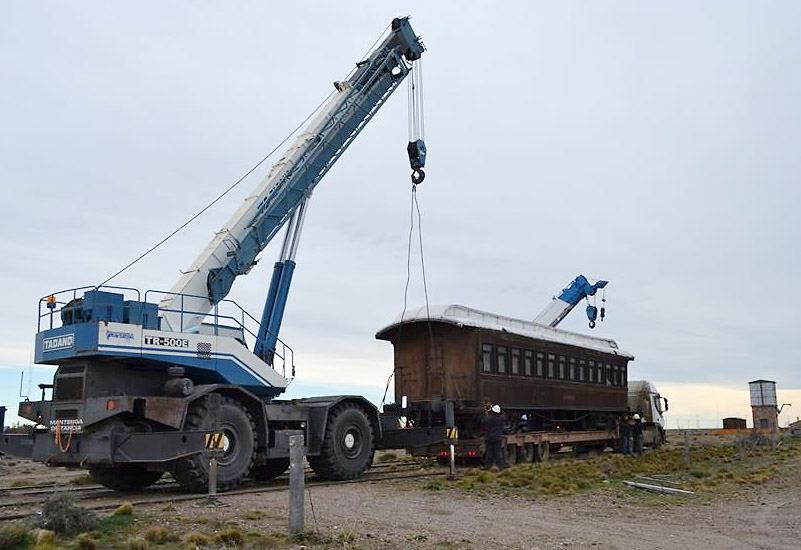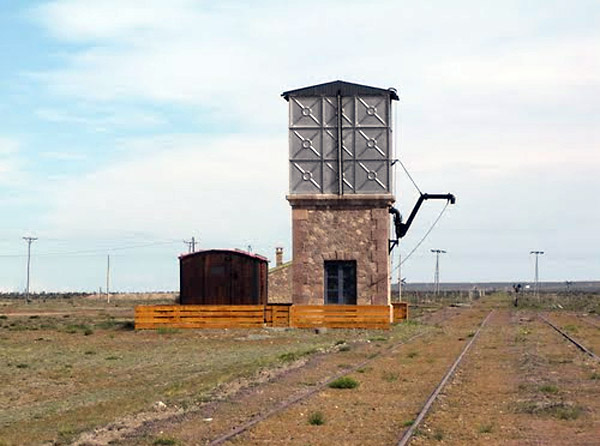 |
|||||||||||||||
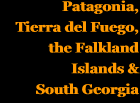 |
|||||||||||||||
 |
|||||||||||||||
 |
|||||||||||||||
Puerto Deseado line extra photos 2 Modern photos
The opposite side, in May 2011, viewed from across the yard.
Whilst most sidings have been removed, the main line and platform tracks were still just about complete in 2000, though some sections have since been removed..
And a close up view taken at the same time in December 2000.
A telegraph tape machine is on display in the museum now housed in the old station building.
Puerto Deseado loco shed. The right hand road appears to have been sealed up professionally some time ago, but the left hand doorway has just been temporarily boarded up.
Left Lying About
The design of the PATAGÓNICOS tanks was unusual in that the tank itself provided the longitudinal strength. When the rolling stock was being broken up in the late 1970s, it was thought too dangerous to attempt to break up the PATOGONICOS tanks due to their being highly contaminated by (crude) oil – presumably as the demolition was being done aided by an oxy-acetylene burner. Accordingly they were just left so that today we may glimpse the elaborate internal framing which they had at one of the lifting points of the tank.
This casting at the base of a signal post not only shows the name of the maker – Messrs Saxby & Farmer of London, England – but also displays the initials FC LNH meaning Ferrocarril Lago Nahuel Huapi, ie. the name of the original intended distination up at Bariloche far to the north.
Tellier station in May 2011. This view illustrates the single signal with two arms that was used at many stations.
The first aid box from Jaramillo station, as now preserved in the museum in Puerto Deseado station building.
Fitz Roy station.The station building is inhabited as a private house.
A back view of the same building.
A rail rolled by Messrs Cammell in Sheffield in 1884.
A casting by the Ramapo Ironworks of New York state USA, in this case the base of a points/switch lever stand.
The photos below by Guillermo Bohrdt show two varieties of circular water tower along the line. There were also square tanks made up of 'Braithwaite' type panels, also on stone bases.
A bus passenger's view heading east towards Puerto Deseado. On the left a water tower and derelict station building can be seen - I think at either Antonio de Biedma or Pampa Alta.
News Updates
One winter's day, Sunday 22 June 2014, the first class coach, P111, from this line, which had been kept in Rawson since 1986, was returned to Jaramillo, where a museum about the FC Patagónico is being created.
This is a fairly recent view of the water tank at Jaramillo. Despite its 40-odd years since abandonment it's looking good, thanks to its forming part of the intended museum development here.
References
22-8-15
|
|||||||||||||||


Main pages
Bariloche line rolling stock •
Com. Rivadavia line extra photos •
Pto. Deseado line extra photos •
Pto. Deseado line extra photos 2 •
Appendices
2 Chronology of Patagonian railway proposals •
3 Bariloche line route itinerary •
4 Com. Rivadavia route itinerary •
5 Pto. Deseado route itinerary •
7 Com. Rivadavia line loco list •
8 Pto. Deseado line loco list •
15 FCP working timetable instructions 1960 •
16 Report on construction 1912 A •
17 Report on construction 1912 B •
21 President Alcorta address •
23 Purchase of wagons decree •
25 Early Patagonian proposals •
26 Progress to Bariloche 1926 •
28 Restructuring report 1953 •
Chapter 4
The FCE broad gauge network
